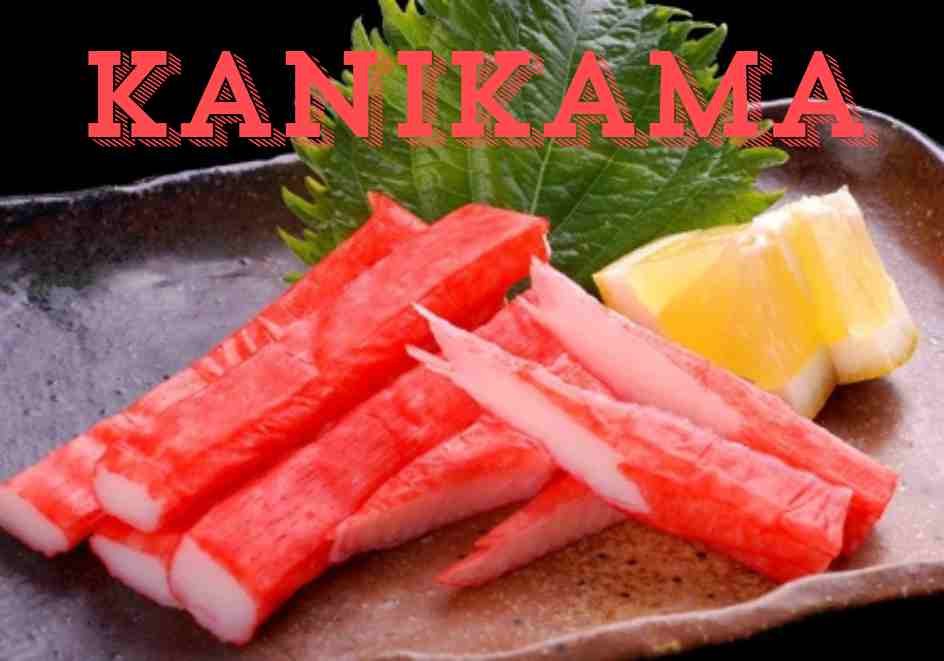If you’re a seafood fanatic, you’ve probably encountered those red and white sticks that flavor like crab but aren’t quite crab. Welcome to the arena of Kanikama—Japanese imitation crab sticks. These flavorful delights reflect the taste and texture of actual crab meat, making them well-known in sushi rolls, salads, and numerous seafood dishes. This put-up gets to the lowest of the secret techniques and strategies inside the crafting of Kanikama, from its interesting records to the innovative culinary uses it makes.
Table of Contents
The History and Global Proliferation of Kanikama
Kanikama, known as imitation crab sticks, originated in Japan in the early Nineteen Seventies as a fee-effective replacement for actual crab meat. Its invention is credited to Sugiyo Co., Ltd., which released “Kanikama” in 1974. The name combines “kani,” which means crab, and “kamaboko,” a traditional Japanese fish cake. Despite its humble beginnings, Kanikama quickly gained recognition around the globe.
Key to its success has been its ability to provide crab’s rich, savory flavor at a fraction of the fee. Over the years, it has become a staple in Western and Asian cuisines, regularly positioned in grocery shops and seafood-eating places. The spread of the sushi subculture similarly strengthened its international enchantment, making Kanikama a versatile and readily available seafood option.
Understanding the Key Ingredient Surimi
At the heart of Kanikama lies surimi, a finely ground fish paste that serves as the muse for imitation crab sticks. Surimi has been utilized in Japanese delicacies for hundreds of years. It was historically made by mincing white-fleshed fish, rinsing it to remove fats and impurities, and refining it into a clean paste.
Surimi production has recently entails techniques that enhance its texture and flavor. Alaskan pollock is the most commonly used fish because of its slight taste and abundance. This flexible paste may be common and flavored to resemble diverse seafood, not just crab. Surimi’s adaptability and affordability have made it a vital ingredient in many imitation seafood products.
The Role of Alaskan Pollock in Kanikama Production
Alaskan Pollock, a member of the cod circle of relatives, performs a big position in Kanikama manufacturing. This fish is prized for its lean meat, moderate taste, and flaky texture, making it a perfect candidate for developing splendid surimi. Sustainable fishing practices used in harvesting Alaskan pollock ensure the constant delivery of this important resource.
The fish undergoes rigorous processing to transform into surimi. Fillets are minced, washed, and refined to achieve the favored consistency. The resulting paste is flexible and nutritious, serving as the primary issue in Kanikama. By utilizing Alaskan pollock, producers can produce imitation crab sticks that closely mimic the taste and texture of actual crab meat.
The Process From Surimi to Imitation Crab Stick
The transformation of surimi into Kanikama involves numerous meticulous steps. First, the surimi paste is mixed with starch, egg whites, and different binding dealers to create a robust aggregate. Flavor enhancers, which encompass crab extract or natural flavors, are delivered to replicate the proper taste of crab.
Next, the aggregate is extruded into long strips and cooked to set the shape. The one-of-a-kind crimson and white coloring is accomplished by layering the surimi mixture and adding food coloring to create the enduring crab stick appearance. Finally, the cooked strips are reduced into personal sticks and packaged for distribution.
This method calls for precision and data to ensure that the final product maintains the popular texture and flavor. Advanced equipment and best management measures play important roles in attaining consistent effects. The cease product is a flexible seafood opportunity that may be utilized in numerous culinary packages.
Quality Control and Health Considerations
Ensuring the quality and protection of Kanikama is paramount. Manufacturers implement strict exceptional management measures at various stages of the production technique. This includes regular testing for contaminants, monitoring the consistency of the surimi paste, and verifying the accuracy of flavorings and shades.
Health concerns additionally play a big role in Kanikama manufacturing. The use of herbal components and sustainable fishing practices permits lower environmental impact. Additionally, Kanikama is often lower in calories and fats compared to real crab meat, making it a healthier choice for seafood lovers.
Consumers must be aware of capability allergens, such as fish and egg whites, present in Kanikama. Reading labels and selecting reliable manufacturers can help ensure a stable and amusing culinary experience. Overall, Kanikama offers a nutritious and accessible alternative to conventional seafood without compromising on taste.
Innovative Uses and Recipes for Kanikama
Kanikama’s versatility extends beyond sushi rolls. It can be integrated into a massive range of dishes, including a burst of taste and texture. Here are a few present-day processes to experience Kanikama:
- Crab Stick Salad: Combine shredded Kanikama with sparkling veggies, avocado, and a tangy dressing for a sparkling and pleasant salad.
- Seafood Pasta Sprinkle diced Kanikama over pasta with a mild cream sauce for a quick and delicious seafood pasta dish.
- Crab Cakes Blend Kanikama with breadcrumbs, herbs, and spices to create savory crab desserts, first-class for appetizers or essential courses.
With its functionality to imitate the flavor and texture of real crab meat, Kanikama opens up endless culinary possibilities. Whether you’re a seasoned chef or a home cook, experimenting with Kanikama can improve your seafood dishes and delight your taste buds.
Conclusion The Future of Kanikama and Seafood
Kanikama has come a protracted manner because its inception, evolving into a cherished seafood alternative cherished by way of many. Its affordability, versatility, and sustainability make it a treasured addition to fashionable cuisine. As technology advances and consumer selections shift, the future of Kanikama seems promising.
Manufacturers continue to innovate, exploring new flavors and packages for natural products. Recognizing sustainability and fitness-conscious alternatives further cements Kanikama’s region in the culinary international. By incorporating Kanikama into your food, you may experience the taste of crab and even help sustainable fishing practices.
Ready to explore the Kanikama sector? Start by incorporating this satisfactory imitation crab stick into your preferred recipes. Discover new flavors, experiment with innovative dishes, and join the developing network of seafood enthusiasts who recognize the paintings of Kanikama craftsmanship.







